June 19, 2023
How to Talk to Users

Grant
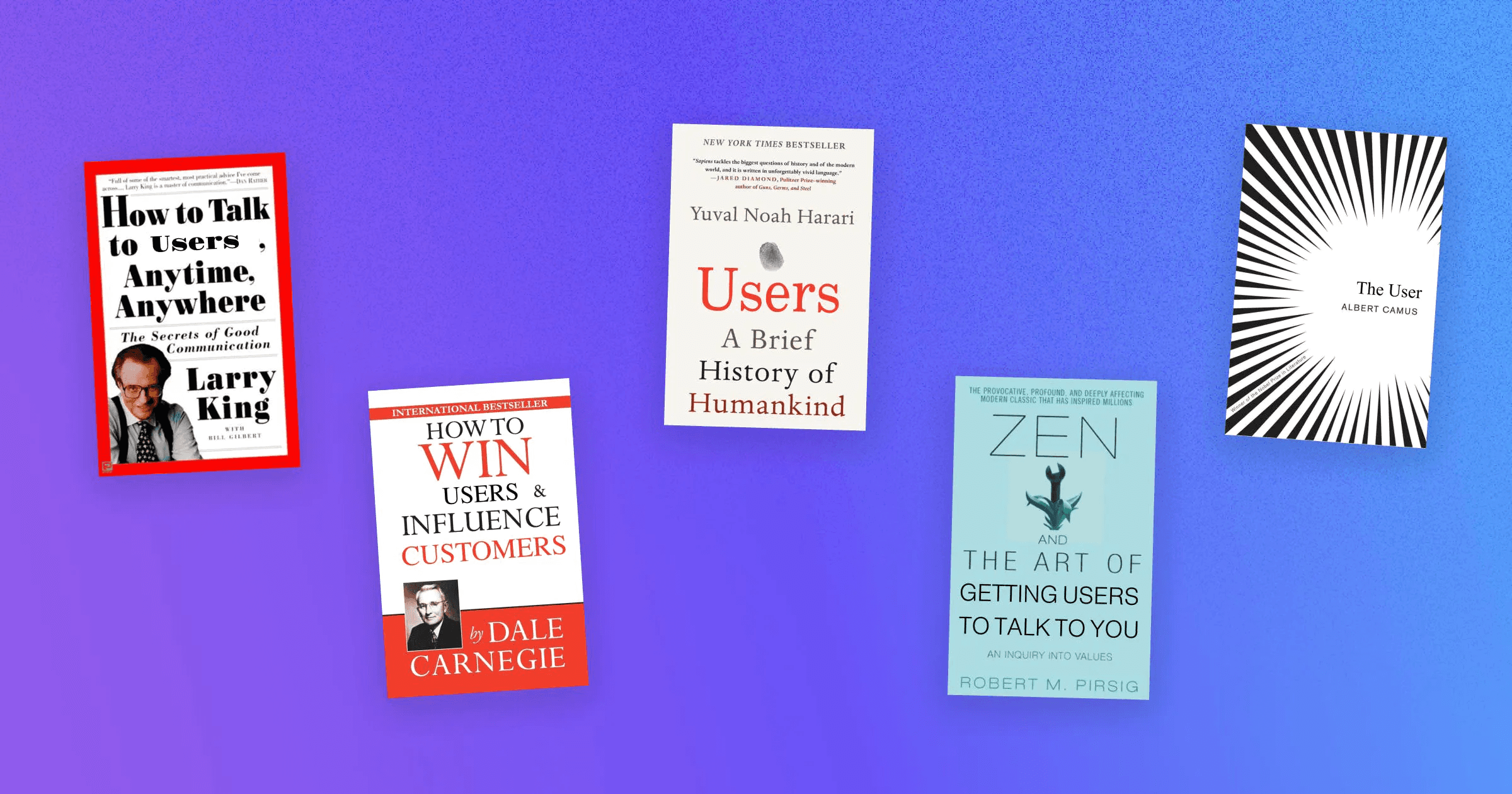
Talking to users is one of the most important things you can do as a startup founder. If you're not talking to your users then you should be building or selling.
Talking to users is a way of understanding your users. There are other ways to understand your users, like analysing usage data, but the reason talking to your users is so important is because a startup often doesn't have enough quantitative data to make meaningful conclusions. No, talking to users won't increase your sample size, but it will increase your information's clarity.
But how do you actually get users to talk to you?
I started thinking about this question after reading a post on Indie Hackers. I replied to the post and shared the only novel idea I could come up with. Dissatisfied with my knowledge on such an important topic I turned to other founders and asked how they started conversations with users.
I grouped their ideas into five categories.
Context: make the most of the different situations you interact with users
Incentives: offer users a reward in exchange for feedback
Power users: focus on your most engaged users
Community: build and leverage online communities
Hacks: tips and tricks for improving feedback or getting more of it
Here's my summary of those ideas.
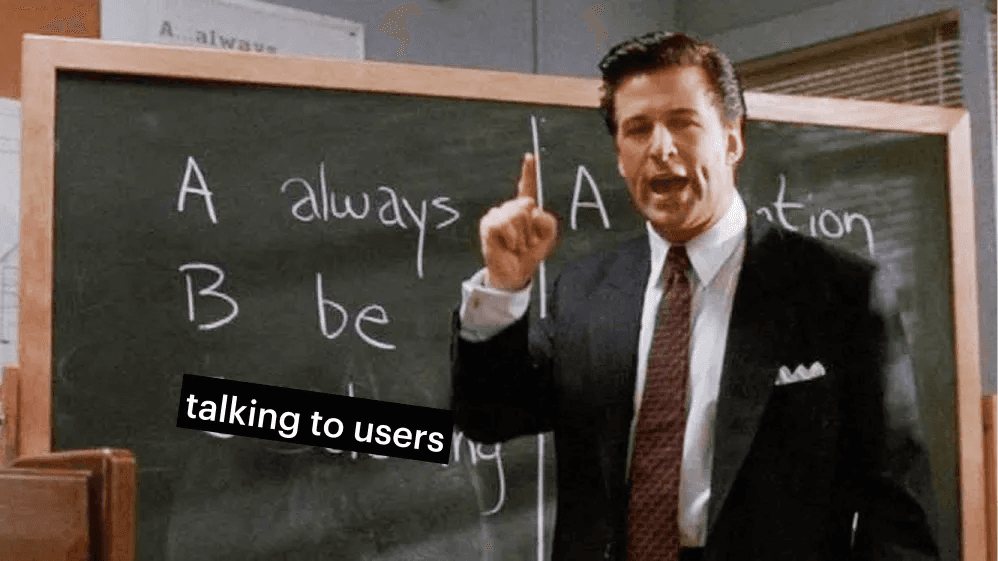
Context
Email is the de facto way to communicate with users, especially in b2b software. But email is busy.
Your user's inbox is already rammed with sales and marketing emails so you should make the most of the other situations you talk with users. The easiest areas to start with are support and sales.
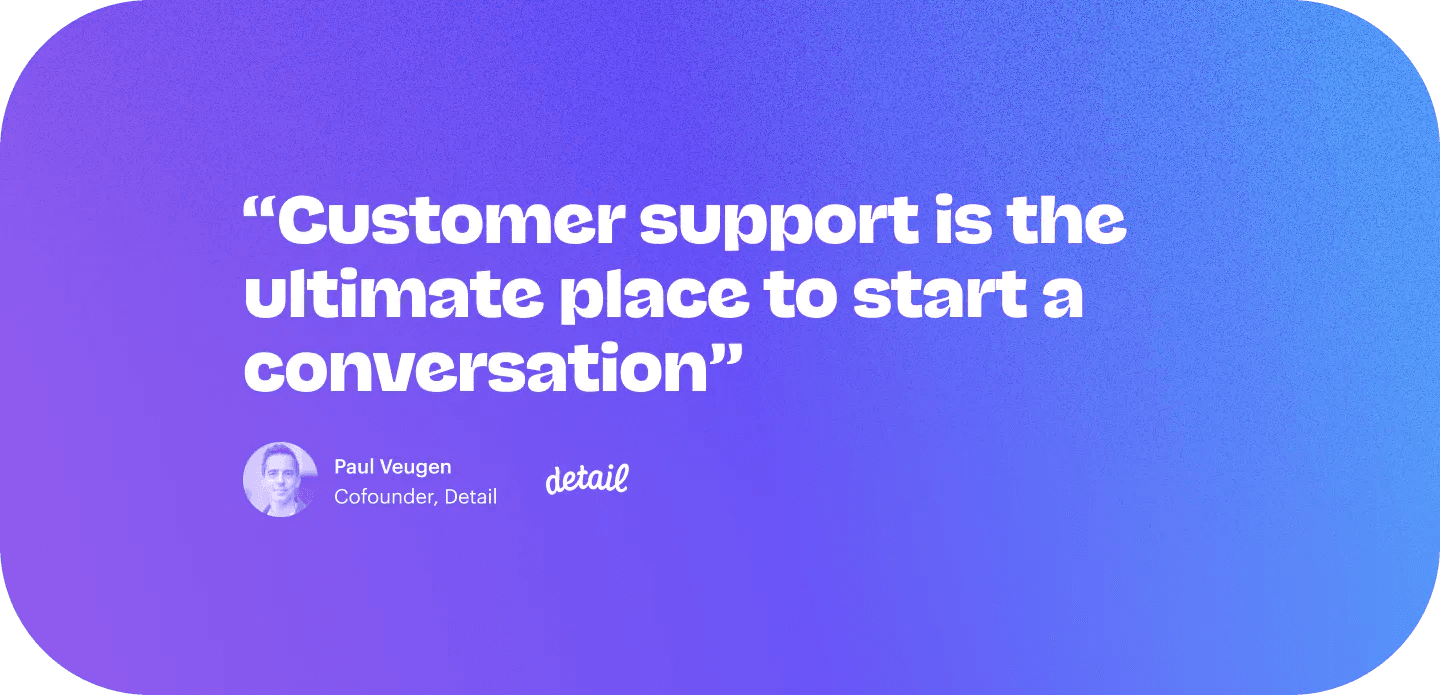
When you book a sales call turn it into an opportunity for learning more about their needs and your product. You could argue that sales calls should already be treated as a research opportunity, but in my own experience it pays to make a conscious effort. When preparing, block some time for product feedback or note down the research questions you want to ask. If you have a sales team, ask to join their calls. Another great opportunity for user feedback is customer support.
Paul Veugen, founder of Detail had this to say about using customer support:
"Customer support is the ultimate place to start a conversation. Being responsive and using inbound requests as a conversation starter helps us learn from users a lot. It can also turn someone with a negative experience into an evangelist. I always appreciate it when folks take the effort to write to support."
Always be talking to users. 💬
Incentives
People like free stuff, and your users are no exception.
Exchanging gift cards for user interviews is a popular approach (ok so not totally free). If you're contacting users over email, including your incentive in the subject line will already increase the odds of booking an interview. Compare the following subject lines:
Share your feedback - $50 gift card for 30 min call
Share your feedback - 30 minute call
I know which I'd open first. One of the founders I spoke with said that offering an Amazon gift card increased their email response rate by 5x.
The gift-card-for-Zoom-call approach doesn't work for everyone though — it's also not cheap. But you can get creative with incentives.
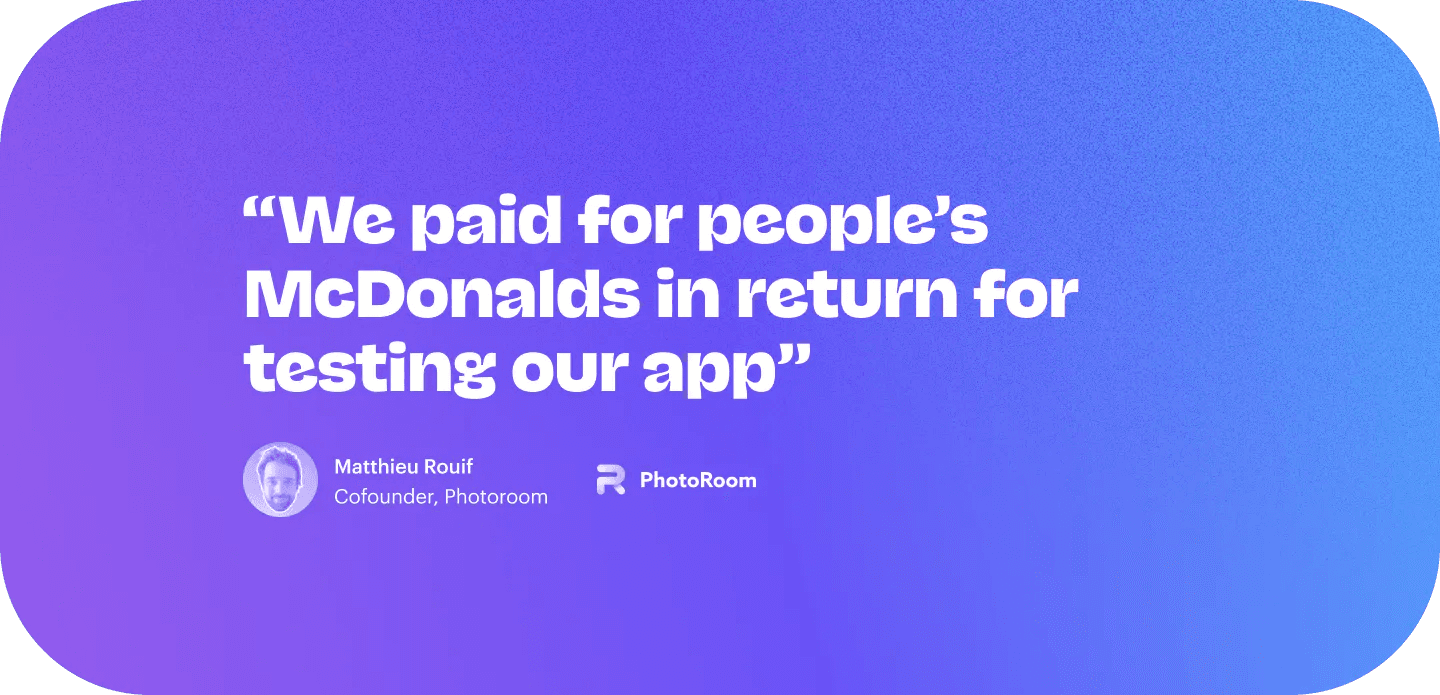
Matthieu Rouif, cofounder of Photoroom got feedback on his mobile app by paying for people's McDonalds. He and cofounder Eliot visited restaurants in Paris and asked queueing patrons to use the app for a few minutes. In return Matthieu and Eliot paid for the participant's meal. Then the guys went home, fixed the issues, and repeated the tests the next day.
Continuing the food theme, Marin Licina, Design Partner at Gradient Ventures told me about his previous startup, a restaurant recommendation app. To find out what people thought of the recommendations Marin asked people on the street if they would go for dinner at a restaurant suggested by the app. Instead of paying for the whole meal, Marin would only cover 60% of the cost.
"It was important for them to have some skin in the game. This helped us understand what users really thought about a restaurant after they'd eaten there".
Food is the way to a user's heart. 🍟
Power users
If you're building a product that people can use on a regular basis then focusing on your heaviest users is often a reliable way to get feedback.
Compared with less engaged users power users will have stronger feelings about your product and probably a greater need for it — factors that work in your favour when starting conversations with them.

Sébastien Robaszkiewicz, co-founder of Jitter told me that a user's activity was a better determinant for getting feedback than whether they were a paying user: power users were more than happy to help improve the product.
Power to the power users. 💪
Community
Community is a hot topic at the moment. But to understand your users, hanging out where they hang out is one of the best things you can do.
Communities eliminate the first problem with talking to users: knowing where to find them. A community is a shared online space where you and your users can hangout together. Talking to people in DMs, Twitter threads, Slack channels, Discord servers, or subreddits makes the experience more natural and less sales-y too. These are places where your users are choosing to spend their time, rather than you interrupting it (which is often how email and calls feel).
Twitter is a great example. When people follow you, your brand, or your space, getting feedback on ideas and new features is easy: just tweet about it. Here's a tweet I saw while writing this post.
We're receiving A LOT of requests to reimagine Developer Tools in the browser...
It wasn't "part of the plan" but it makes sense in retrospect (Chrome/Safari have their own incentives)...
How might we improve + power-up Developer Tools for you?
(Deciding if worth focusing on) pic.twitter.com/VK3Dl34vRw— Josh Miller (@joshm) November 1, 2021
Twitter also has lots of great examples of founders who've used the platform to build a following and a community.
In just over a year Kenneth Cassel, founder of Slip built a following of thousands across his personal and company account. For people trying to grow a community on Twitter Kenneth shared the following advice.
"Just being nice and helpful to folks can be a huge advantage long term. It might not prove to be useful in a one month timeframe, but I've had great outcomes just from taking time to be helpful to folks."
Public communities like Twitter or LinkedIn can get noisy though. Creating communities on Slack or Discord gives you more control over the conversation and topics.
It can take a lot of time and effort to grow a community, but the reward — staying close to your users — is probably worth it. 💙
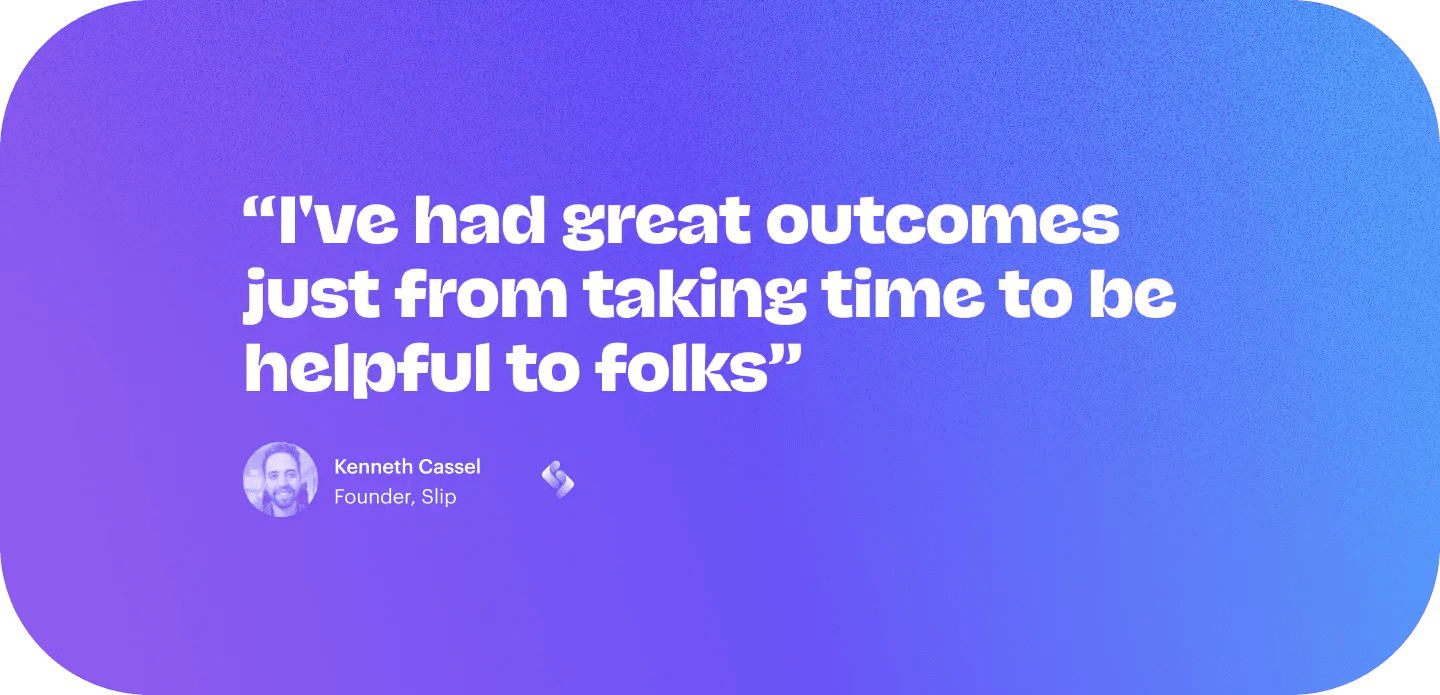
Hacks
Sometimes getting a reply to your email or booking a call just takes a knack. Here are a few extra tips that can help.
Send relevant emails about recent events 🎯
A few days after a new feature ships, Ben from Matter will message users who tried the feature and ask about their experience. This makes the message relevant to the recipient and it's about something they should have a good memory of. (In general, when getting feedback from users you want it to be based on recent events. I've asked users for feedback on features they use infrequently or haven't used in a while — it never goes well.)
Share memorable calendar links ✨
Calendar links are convenient for arranging customer conversations. Enzo from June took this a step further and made booking a call with him more interesting by using a fun custom domain for his calendar. Here's one I made inspired by Enzo's: grant.chat
Lower the barrier to responding 🍰
Paul from Detail knows that his customers' inboxes are busy so he makes requests for feedback as easy as possible. When he wants feedback on a topic Paul emails customers a very specific question, includes a list of possible answers (A, B, C...), and closes it with "Just reply with a letter".
Give users options ✅
Fed, maker of Gummy Search and The Hive Index suggested giving users different ways to share feedback. If you email a customer asking for feedback, make replying over email easy by including all the information needed to answer. But also include an option to book a call if they're happy to go into more detail. Fed said "This is super clutch because some folks might be willing to take the time, while some just want to reply to the email and be done with it."
Email conversations 💌
I watched a talk from Rahul Vohra, the founder of Superhuman where he said that once a user replies to you try to keep them talking. By concluding your response with another meaningful question you can keep the conversation going and keep the insights coming. (Obviously be respectful of the person's time. If they're not into it, don't bug them, keep that customer experience KPI high!). Building rapport with users over email means you'll have a better chance of getting feedback and discussing their needs in the future.
Asynchronous video 🎥
Whether you're contacting users over email, DM, a thread — wherever — you're bound by the limits of written communication. Written questions and answers can be misinterpreted, and descriptions can be long and vague. By including a video with your message you can be more clear and users can watch something more interesting than a plain old email. Tools like Tella make it easy to record your screen and camera and walk through new ideas you want feedback on.
There's no one thing you can do to get more conversations with users, but I hope this post has given you some ideas to test. If you've got some ideas that you think could be added, send me a message!



